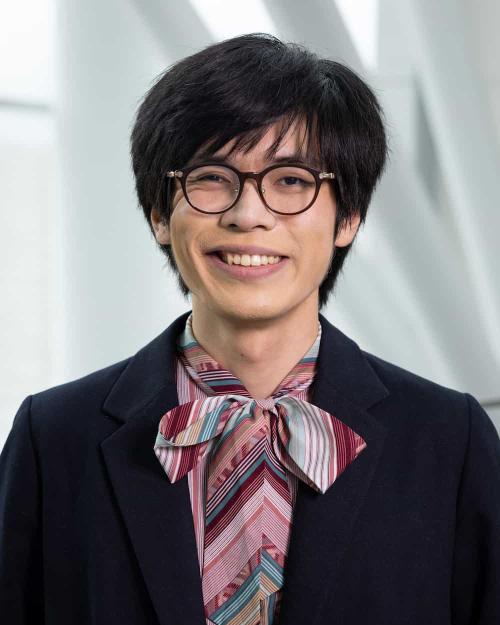Dongwoo Chung
Assistant Professor, Astronomy
Academic focus:
My research traces galaxies across the observable universe in space and time as they form and transform stars, gas and dust. In particular, my work supports a range of experiments employing a technique called line-intensity mapping, directly tracing three-dimensional cosmic structures through interstellar gas emitting in specific wavelengths of light. This technique doesn't strictly need us to resolve individual galaxies hosting that gas, so even small- to mid-scale line-intensity mapping projects can output a lot of interesting science. In all of these experiments, my collaborators and I want to know: How did our universe form its first stars and galaxies? How did these objects alter the cosmic environments they live in, and evolve into galaxies like our own? And: can we use our observations of these galaxies to learn about the formation and evolution of cosmic large-scale structure, to better understand how reverberations in the primordial fireball led to the emergence of the “Cosmic Web”?
Current research project:
The CO Mapping Array Project (COMAP) Pathfinder is a line-intensity mapper that has been working to detect the signature of star-forming gas from around 11.5 billion years ago; the Tomographic Ionized-carbon Mapping Experiment (TIME) is a different line-intensity mapper that will soon begin observations of interstellar gas from even further back in time, in the first billion years of observable cosmic history. I've been making sense of recent COMAP Pathfinder results with collaborators in Caltech, Oslo and elsewhere, while also working with a different set of local and remote collaborators on getting the TIME instrument tested as it prepares to observe from its winter home at the Arizona Radio Observatory on Kitt Peak. I intend to leverage insights gained from these experiments towards the line-intensity mapping survey that will operate from the CCAT observatory, a breakthrough facility under construction enabled through an international collaboration led by Cornell.
Previous positions:
- CITA–Dunlap Institute Senior Research Fellow, Canadian Institute for Theoretical Astrophysics & Dunlap Institute for Astronomy and Astrophysics, University of Toronto, 2020–2024
Academic background:
- Ph.D., Physics, Stanford University, 2020
- A.B., Physics, Princeton University, 2014
Last book read:
“This Is How You Lose the Time War” by Amal El-Mohtar and Max Gladstone
In your own time / when not working:
I go hiking, dabble in music (piano and ukulele plus a rotation of often less standard instruments) and play with a wide range of Duolingo courses. I’m sure my office interior reflects a number of special interests that I’m not listing here, but those don’t count if I’m bringing them into work!
Courses you’re most looking forward to teaching:
I’m excited to guide students through topics in extragalactic astrophysics and cosmology at all levels, undergraduate and graduate. For instance, in the upcoming spring semester I’ll be one of the two professors teaching The History of the Universe (ASTRO 2201) — 14 billion years compressed into a few months! I hope my students will find the big questions about the universe as intriguing as I do.
What most excites you about Cornell:
It will be a privilege to work alongside brilliant, welcoming faculty and staff in astronomy, physics, and elsewhere (even more so because I have been proud to collaborate with some of them on TIME and CCAT for quite a few years already); a great responsibility to support students and postdoctoral researchers as they navigate their work and their career paths; and a happy relief to be able to cogitate while walking through an array of natural areas (or to the Ice Cream Bike). I’m particularly excited to be working from Cornell at a time when many of us here are making the push to get CCAT built and working in the next few years!




